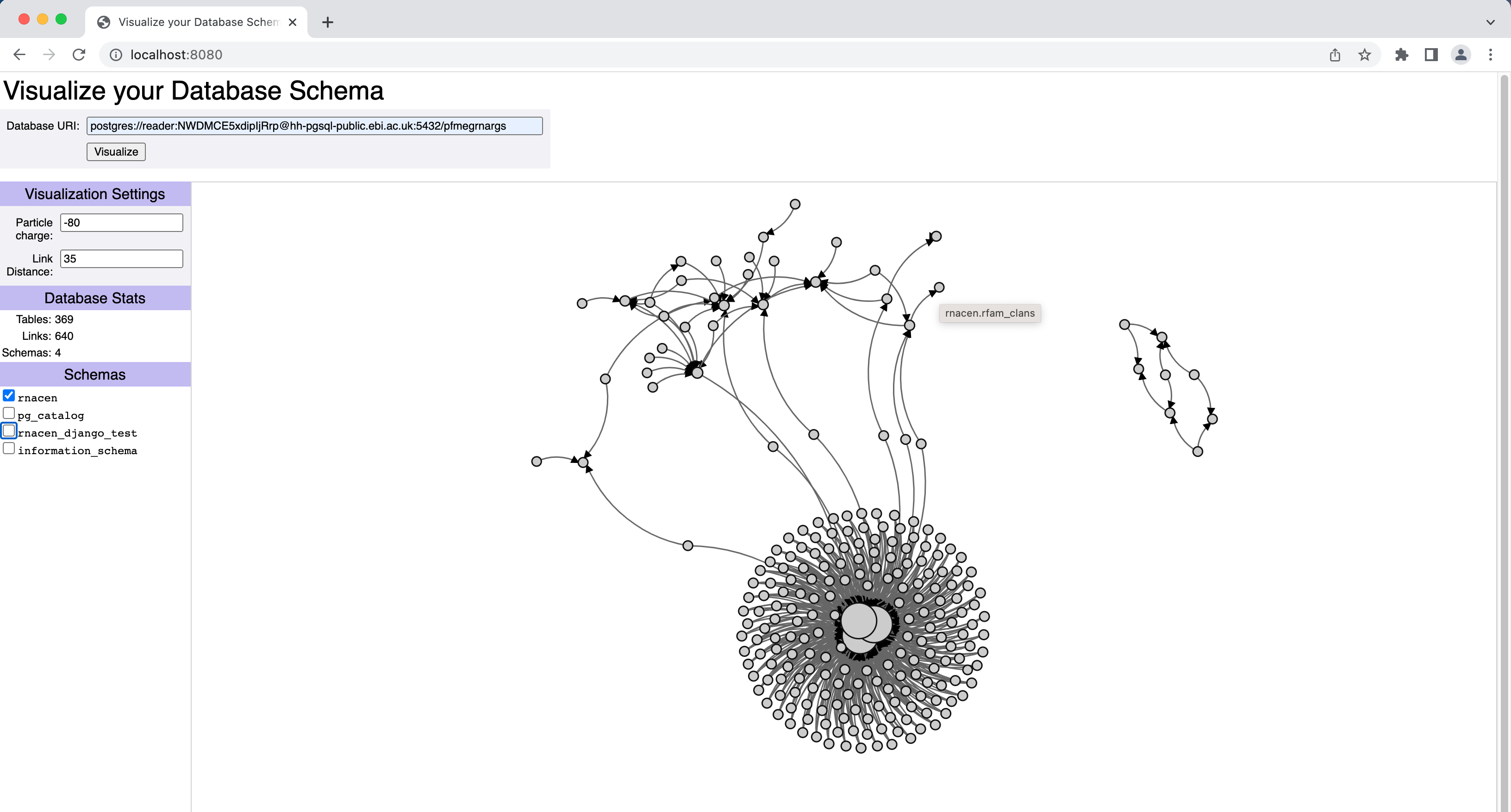Visualize dependencies between the tables in your database.
- The Node Package Manager (NPM)
- Python (3.9 or newer)
- Poetry (Python package manager)
First, clone the repo locally:
$ git clone https://github.com/shashank025/schemaviz.git
Next, browse to the frontend/ folder, and run npm install:
$ cd schemaviz/frontend
$ npm install
In one terminal, start the Python backend:
$ cd schemaviz/backend
$ poetry run uvicorn schemaviz_backend.main:app --reload
In another terminal, start the frontend:
$ cd schemaviz/frontend
$ npm start
This will start a local webserver at http://localhost:8080/.
- Navigate to the local webserver in your browser.
- Enter the connection string for your database, and
- Click "Visualize"
The web application should shortly display a directed graph showing the tables in your database and the relationships between them.
For example, when I point this tool at the following publically available database:
postgres://reader:NWDMCE5xdipIjRrp@hh-pgsql-public.ebi.ac.uk:5432/pfmegrnargs
here's how the resulting visualization looks:
This tool consists of a frontend, and a backend:
-
The backend is a Python-based API service that currently exposes just one API that lets you specify a database to connect to. This service connects to that database, queries its schema, and assembles dependency info to the API caller.
-
The frontend is a Node-based web application that queries the backend and renders the database schema visually.
We use d3's force directed layout scheme to produce an SVG image where each relation (table) in your schema is rendered as a node. A directed edge is added from node A to node B if some columns in A refer to some columns in B, as expressed via a foreign key constraint:
A ---> B
A good visualization is particularly useful when the underlying database schema is pretty large (1000+ tables). But it is not straightforward to render the force directed layout for a graph that large. Here are some ideas to make the visualization more useful:
- Ability to search for and highlight a given table in the schema.
- Expose the parameters of the force directed layout:
height,width,linkDistance,charge,gravity, etc. - Vertical/horizontal scrolling through the rendered SVG.
- Fisheye distortion to focus on a particular area of the graph.
